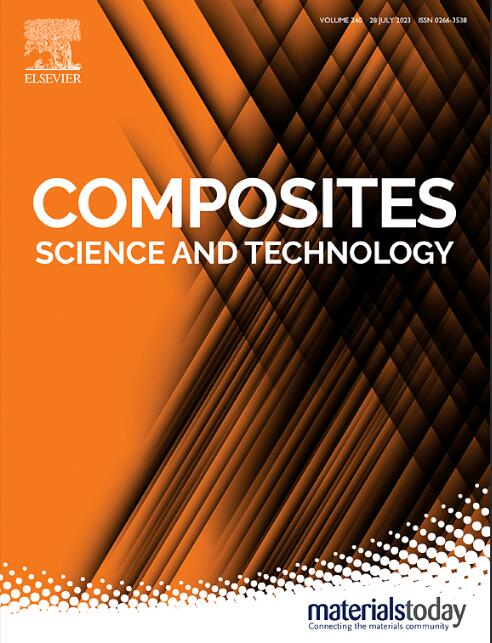A coupled deep learning and DEM modelling approach for transverse crack prediction in UD-GFRP composites
IF 8.3
1区 材料科学
Q1 MATERIALS SCIENCE, COMPOSITES
引用次数: 0
Abstract
Glass fibre reinforced polymer (GFRP) composites are widely used in engineering applications due to their exceptional mechanical properties. An efficient surrogate modelling framework is highly demanded for the accurate prediction of cracks in unidirectional glass fibre reinforced polymer (UD-GFRP) composites. In this study, three deep learning models are developed to address the complexities of crack prediction at the microscopic level. Training and testing data are derived from discrete element method (DEM) modelling simulations of randomly generated representative volume elements (RVEs). A deep neural network (DNN) regression model is first constructed to predict the occurrence of the initial crack using input features derived from fibre distribution within RVEs. The model identifies the initial crack by predicting the contact bond with the highest regressed contact force. A second DNN model is developed to predict the location of the subsequent crack by incorporating features related to the position of the initial crack. The performance of the two trained DNN models are evaluated with unseen data, demonstrating and highlighting the increased complexity of the task. To improve computational efficiency and accuracy, a convolutional neural network (CNN) model is introduced for the prediction of initial cracks. By exploiting the microstructural images of GFRP, the CNN model captures spatial hierarchies and local features, enabling direct and accurate crack location prediction. Compared to the physics-based DEM model, the CNN model reduces computational time by several orders of magnitude, providing a scalable solution for full-field crack predictions.
基于深度学习和DEM的UD-GFRP复合材料横向裂纹预测方法
玻璃纤维增强聚合物(GFRP)复合材料以其优异的力学性能在工程中得到了广泛的应用。为了准确预测单向玻璃纤维增强聚合物(UD-GFRP)复合材料的裂纹,迫切需要一种高效的替代模型框架。在本研究中,开发了三个深度学习模型来解决微观层面上裂纹预测的复杂性。训练和测试数据来源于随机生成的代表性体元(RVEs)的离散元法(DEM)建模仿真。首先构建深度神经网络(DNN)回归模型,利用RVEs内纤维分布的输入特征来预测初始裂纹的发生。该模型通过预测具有最大回归接触力的接触键来识别初始裂纹。第二个深度神经网络模型通过结合与初始裂纹位置相关的特征来预测后续裂纹的位置。两个训练好的DNN模型的性能用未见过的数据进行评估,展示并突出了任务的复杂性。为了提高计算效率和精度,引入了卷积神经网络(CNN)模型对初始裂纹进行预测。通过利用GFRP的微观结构图像,CNN模型捕获空间层次和局部特征,从而实现直接和准确的裂缝位置预测。与基于物理的DEM模型相比,CNN模型将计算时间减少了几个数量级,为全场裂缝预测提供了可扩展的解决方案。
本文章由计算机程序翻译,如有差异,请以英文原文为准。
求助全文
约1分钟内获得全文
求助全文
来源期刊

Composites Science and Technology
工程技术-材料科学:复合
CiteScore
16.20
自引率
9.90%
发文量
611
审稿时长
33 days
期刊介绍:
Composites Science and Technology publishes refereed original articles on the fundamental and applied science of engineering composites. The focus of this journal is on polymeric matrix composites with reinforcements/fillers ranging from nano- to macro-scale. CSTE encourages manuscripts reporting unique, innovative contributions to the physics, chemistry, materials science and applied mechanics aspects of advanced composites.
Besides traditional fiber reinforced composites, novel composites with significant potential for engineering applications are encouraged.
 求助内容:
求助内容: 应助结果提醒方式:
应助结果提醒方式:


